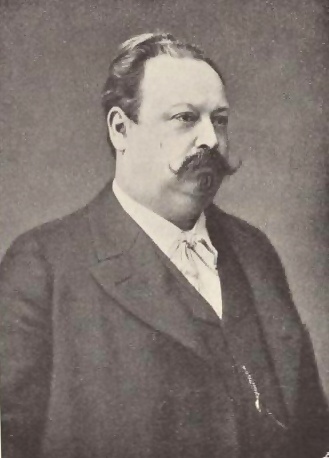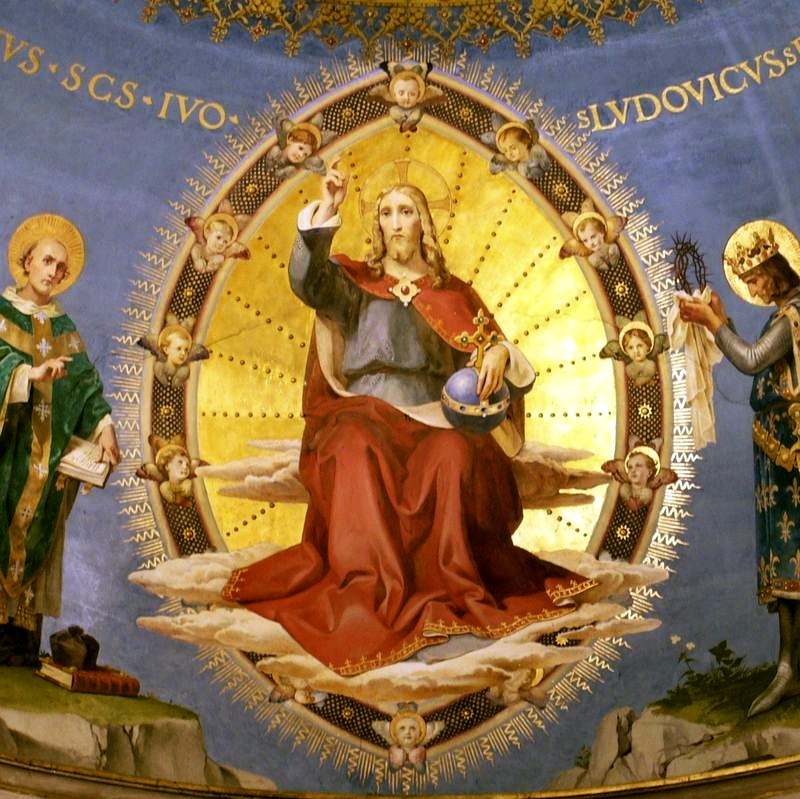Ludwig Seitz on:
[Wikipedia]
[Google]
[Amazon]

 Ludovico Seitz, or Ludwig Seitz (11 June 1844, Rome - 11 September 1908,
Ludovico Seitz, or Ludwig Seitz (11 June 1844, Rome - 11 September 1908,
(Online)
* Matthias Michel: ''Der deutsch-römische Maler Ludwig Seitz (1844-1908) und seine Ausmalung der Johannes Nepomuk-Kapelle in S. Maria dell'anima in Rom'', Hausarbeit zur Erlangung des akademischen Grades eines Magister Artium,
Online
* Dominik Bartmann: ''Anton von Werner: Jugenderinnerungen (1843-1870)'', Deutscher Verlag für Kunstwissenschaft, Berlin 1994, , S. 41
(Online)
@ Idle Speculations
@ Saint-Yves-des-Bretons à Rome {{DEFAULTSORT:Seitz, Ludovico 1844 births 1908 deaths 19th-century Italian painters 20th-century Italian painters Nazarene movement Italian people of German descent

 Ludovico Seitz, or Ludwig Seitz (11 June 1844, Rome - 11 September 1908,
Ludovico Seitz, or Ludwig Seitz (11 June 1844, Rome - 11 September 1908, Albano Laziale
Albano Laziale (;; ) is a ''comune'' (municipality) in the Metropolitan City of Rome Capital, on the Alban Hills, in the Italian region of Lazio. Rome is distant. It is bounded by other communes of Castel Gandolfo, Rocca di Papa, Ariccia and ...
) was an Italian painter of German ancestry, who served as Director of the Vatican Galleries.
Life and work
His father was the painter, Alexander Maximilian Seitz, a member of theNazarene movement
The epithet Nazarene was adopted by a group of early 19th-century German Romantic painters who aimed to revive spirituality in art. The name Nazarene came from a term of derision used against them for their affectation of a biblical manner of c ...
; originally from Munich
Munich is the capital and most populous city of Bavaria, Germany. As of 30 November 2024, its population was 1,604,384, making it the third-largest city in Germany after Berlin and Hamburg. Munich is the largest city in Germany that is no ...
. His mother, Gertrud née Platner, was the daughter of the painter and diplomat, Ernst Zacharias Platner
Ernst Zacharias Platner (1 October 1773, Leipzig - 14 October 1855, Rome) was a German painter, writer, and diplomat.
Biography
His father was the physician, Ernst Platner. He began studying art in Leipzig, with Adam Friedrich Oeser, then went ...
. King Ludwig I
Ludwig I or Louis I (; 25 August 1786 – 29 February 1868) was King of Bavaria from 1825 until the 1848 revolutions in the German states. When he was crown prince, he was involved in the Napoleonic Wars. As king, he encouraged Bavaria's ind ...
was his godfather.
He initially studied art with his father, then with Friedrich Overbeck
Johann Friedrich Overbeck (3 July 1789 – 12 November 1869) was a German painter and a founder of the Nazarene art movement.
Early life and education
Overbeck was born in Lübeck in 1789. His family had been Protestant pastors for three genera ...
and, later, from Peter von Cornelius
Peter von Cornelius (23 September 1783, Düsseldorf – 6 March 1867, Berlin) was a German Painting, painter; one of the main representatives of the Nazarene movement. He was the uncle of the composer Peter Cornelius (1824–1874).
Life
Earl ...
. In 1887, he became an Inspector (curator) at the Vatican Galleries, and was promoted to Director in 1894. He belonged to several Catholic artists' associations and produced numerous religious fresco
Fresco ( or frescoes) is a technique of mural painting executed upon freshly laid ("wet") lime plaster. Water is used as the vehicle for the dry-powder pigment to merge with the plaster, and with the setting of the plaster, the painting become ...
es, mostly in Nazarene style, but also with hints of Historicism
Historicism is an approach to explaining the existence of phenomena, especially social and cultural practices (including ideas and beliefs), by studying the process or history by which they came about. The term is widely used in philosophy, ant ...
.
Perhaps his best known works are ceiling frescoes, commissioned by Pope Leo XIII
Pope Leo XIII (; born Gioacchino Vincenzo Raffaele Luigi Pecci; 2March 181020July 1903) was head of the Catholic Church from 20 February 1878 until his death in July 1903. He had the fourth-longest reign of any pope, behind those of Peter the A ...
, in the "Gallery of Candelabras" at the Apostolic Palace
The Apostolic Palace is the official residence of the Pope, the head of the Catholic Church, located in Vatican City. It is also known as the Papal Palace, the Palace of the Vatican and the Vatican Palace. The Vatican itself refers to the build ...
, which is now a part of the Vatican Museums
The Vatican Museums (; ) are the public museums of the Vatican City. They display works from the immense collection amassed by the Catholic Church and the papacy throughout the centuries, including several of the best-known Roman sculptures and ...
. He also created paintings at Sant'Ivo dei Bretoni
The Church of Saint Ivo of the Bretons (, , ) is a Roman Catholic church dedicated to Saint Ivo of Kermartin, patron of Brittany.
, a French church, and the chapel at the Basilica della Santa Casa
The Basilica della Santa Casa () is a Marian shrine in Loreto, Marche, Loreto, in Marche, the Marches, Italy. The basilica is known for enshrining the house in which the Blessed Virgin Mary is believed by some Catholics to have lived. Pious legen ...
. Together with his father, he painted murals at Đakovo Cathedral
The Đakovo Cathedral or Cathedral basilica of St. Peter () is the cathedral of the Roman Catholic Archdiocese of Đakovo-Osijek in Đakovo, Croatia.
Đakovo Cathedral is the biggest sacral newly built building of Croatian historicism. The St. Pet ...
in Croatia
Croatia, officially the Republic of Croatia, is a country in Central Europe, Central and Southeast Europe, on the coast of the Adriatic Sea. It borders Slovenia to the northwest, Hungary to the northeast, Serbia to the east, Bosnia and Herze ...
.
Santa Maria dell’Anima
Santa Maria dell'Anima () is a church in central Rome, Italy, just west of the Piazza Navona and near the Santa Maria della Pace church. It was founded during the course of the 14th century by Dutch merchants, who at that time belonged to the Holy ...
, the German national church, has works by Seitz in the chapel dedicated to saints John of Nepomuk
John of Nepomuk (or John Nepomucene) (; ; ) ( 1345 – 20 March 1393)
was a saint of Bohemia (a western part of what is now the Czech Republic) who was drowned in the Vltava river at the behest of King Wenceslaus IV of Bohemia. Later accounts st ...
and Jan Sarkander, as well in the ceiling of the nave
The nave () is the central part of a church, stretching from the (normally western) main entrance or rear wall, to the transepts, or in a church without transepts, to the chancel. When a church contains side aisles, as in a basilica-type ...
.
His students included the Bavarian church painter, Kaspar Schleibner
Kaspar Schleibner (23 February 1863, Hallstadt - 27 January 1931, Munich) was a German church painter.
Life and work
He was the son of a Master shoemaker. After taking drawing lessons at a local secondary school, he went to Bamberg in 1875, to ...
, and the Belgian artist, Jozef Janssens, who also created religious works. His successor at the Galleries was the Italian painter and art historian, Pietro D’Achiardi
Pietro D'Achiardi (28 October 1879, Pisa – 18 December 1940, Rome) was an Italian painter, art historian, art critic, and museum director.
Biography
He was born to the mineralogist, Antonio D'Achiardi and his wife, Marianna, née Camici. His ...
.
References
Further reading
* *Rudolf Vierhaus
Rudolf Vierhaus (29 October 1922 – 13 November 2011) was a German historian who mainly researched the Early modern period. He had been a professor at the newly founded Ruhr University Bochum since 1964. From 1971, he was director of the in Gött ...
: ''Deutsche Biographische Enzyklopädie'' Band 9, Saur, München 2008, , S. 389(Online)
* Matthias Michel: ''Der deutsch-römische Maler Ludwig Seitz (1844-1908) und seine Ausmalung der Johannes Nepomuk-Kapelle in S. Maria dell'anima in Rom'', Hausarbeit zur Erlangung des akademischen Grades eines Magister Artium,
Online
* Dominik Bartmann: ''Anton von Werner: Jugenderinnerungen (1843-1870)'', Deutscher Verlag für Kunstwissenschaft, Berlin 1994, , S. 41
(Online)
External links
@ Idle Speculations
@ Saint-Yves-des-Bretons à Rome {{DEFAULTSORT:Seitz, Ludovico 1844 births 1908 deaths 19th-century Italian painters 20th-century Italian painters Nazarene movement Italian people of German descent